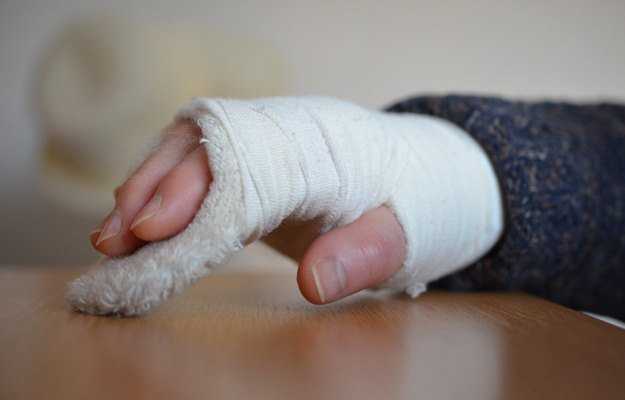What is a fractured hand?
A fractured hand refers to a break or crack in the bones of the hand, such as the bones of the wrist, palm, or fingers. Metacarpal bones are the bones between the bones of the wrist and the fingers. The most commonly seen hand fracture is boxer’s fracture, a fracture of the 5th metacarpal bone. The bones of the hand are aligned in precision; hence, a hand fracture can cause significant difficulty in carrying out day-to-day activities.
What are its main signs and symptoms?
Most common signs and symptoms of a hand fracture include:
Other signs and symptoms of a hand fracture include:
- Difficulty and discomfort in movement of the arm, fingers or wrist.
- Deformity.
- Sunken or depressed appearance in case of a knuckle fracture.
A characteristic sign of wrist fracture is pain that may subside temporarily and then return as a deep, dull ache with significant tenderness when pressure is applied on the medial side of the wrist.
Rarely occurring symptoms include:
- Stiffness or disability
- Blood vessel or nerve damage
What are the main causes?
Hand fracture may occur if one trips or falls directly on the outstretched arm.
Other causes include:
- Direct or crushing injuries sustained in vehicle accidents.
- Sports injuries, especially those with snowboarding, have a higher risk of leading to a fractured hand.
- Diseases like osteoporosis also make a person more prone to fractures.
How is it diagnosed and treated?
A history of symptoms and careful physical examination of the fractured bone and the surrounding area aids in the diagnosis of the condition.
The doctor will also examine your tendons, hand stability, and function of the hand.
Investigations include:
- X-rays are useful in detecting the fracture and also in determining its severity.
- X-rays may also be required in post-treatment follow-up in order to assess bone healing.
Non-surgical treatment involves aligning the bones using gentle manipulation by the doctor and using a cast, splint or buddy-taping to keep the bony fragments in place and allow healing.
Analgesics (painkillers) are used for symptomatic relief.
Stretching exercises to remove stiffness can be started approximately three weeks after treatment onset.
Surgical treatment may be required in certain cases where the doctor will open the area of the fracture site in order to align the bones. If necessary, additional small devices such as screws, wires or plates may be implanted into the bone for proper alignment of the bones.

 OTC Medicines for Fractured Hand
OTC Medicines for Fractured Hand















